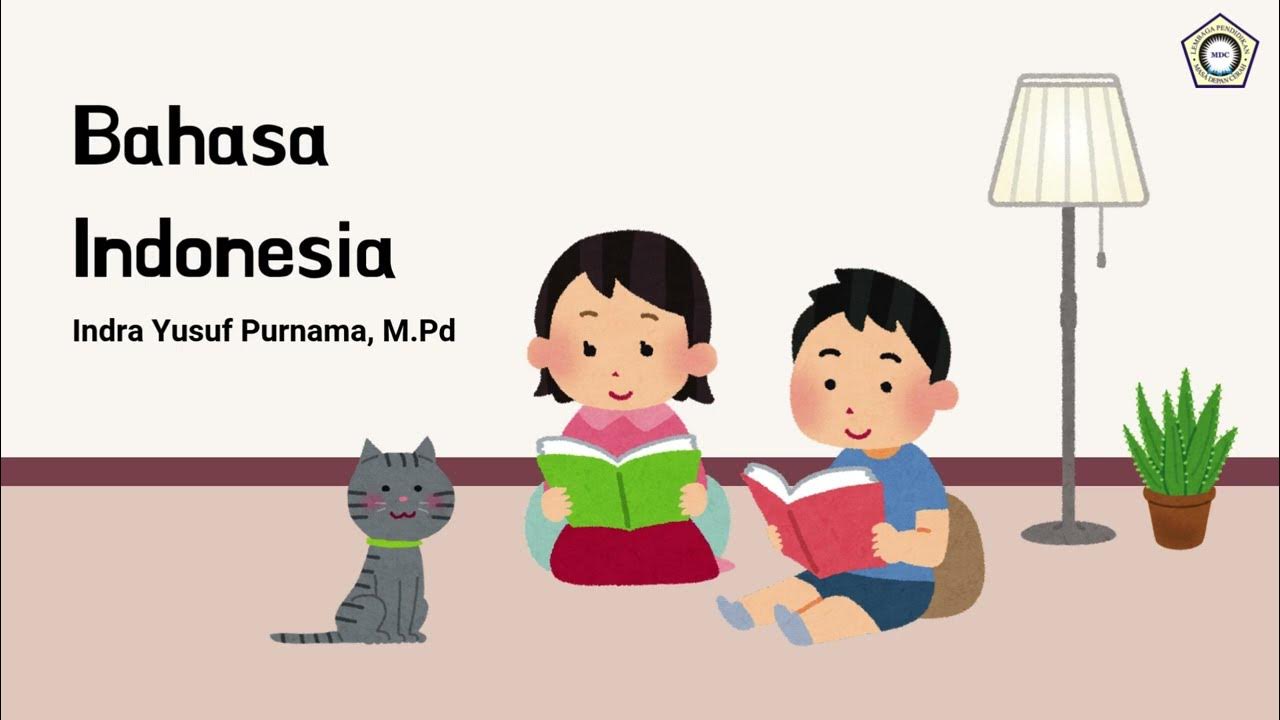Announcement Text (Social function, structure of text, language features, and TASK)
Summary
TLDRIn this video, the presenter explores the concept of announcement texts in Indonesian, focusing on their structure, social function, and linguistic features. The video highlights how these texts, which can be either written or spoken, aim to inform people about past or upcoming events. Key elements include the title (or heading), the body with the essential 5W1H information (What, Where, When, Why, How, Who), and the closing with contact details or further information. An example is provided using a cancellation notice for a JYJ concert in Singapore. The video concludes with an interactive exercise for viewers to apply their understanding.
Takeaways
- 😀 Noun texts (pengumuman) are used to give information about events that have happened or will happen, often heard in public places like schools, malls, stations, or airports.
- 😀 The structure of an announcement text typically includes three parts: a title (head), the body (main information), and a closing.
- 😀 The title or head of the announcement grabs attention and often includes the main subject, such as the announcement's purpose (e.g., 'cancellation of an event').
- 😀 The body of the announcement provides detailed information using the 5Ws and 1H: What, Where, When, Why, Who, and How.
- 😀 The closing section of the announcement may include contact information or the name of the organization or person issuing the announcement.
- 😀 Linguistic features of announcement texts depend on the nature of the information: past events use past tense, while future events use future tense.
- 😀 An announcement about the cancellation of an event, such as a concert, is usually written in simple present or present perfect tense, indicating the event's current status or decision.
- 😀 The provided example about the JYJ concert cancellation in Singapore demonstrates the use of clear, formal language to communicate the decision and its rationale.
- 😀 Announcements can be delivered either in writing (e.g., posters, bulletins) or orally (e.g., through a loudspeaker).
- 😀 Understanding the 5Ws and 1H is essential when analyzing announcement texts, as they help identify key information about the event or situation being discussed.
- 😀 The purpose of announcements is to provide clear, concise information to a specific audience, often addressing inconvenience or changes that affect people’s plans.
Q & A
What is the main topic discussed in the video?
-The main topic of the video is about announcement texts, their structure, social function, and linguistic features. The video explains how announcements are used to convey important information and provides examples.
What are some common places where we encounter announcement texts?
-We commonly encounter announcement texts in schools, public places like malls, train stations, airports, and even in mosques near our homes.
What is the social function of an announcement text?
-The social function of an announcement text is to give information to the public about something that has happened or something that will happen.
What are the typical components of an announcement text?
-The typical components of an announcement text include the title (or heading), the body (which contains the main information), and the closing (which may include contact information or the source of the announcement).
What is usually found in the body of an announcement text?
-The body of an announcement text usually contains the 5W1H: What, Where, When, Why, How, and Who. These elements help answer key questions about the event or information being announced.
What is the importance of using 5W1H in an announcement text?
-Using 5W1H in an announcement text is important because it provides clear and comprehensive details about the event or information being shared, ensuring the audience understands all key aspects.
What kind of tenses are used in announcement texts?
-In announcement texts, the present tense and present perfect tense are often used when discussing information that has happened, while the future tense is used for information about upcoming events.
What are some examples of linguistic features found in announcement texts?
-Examples of linguistic features in announcement texts include the use of simple present tense (e.g., 'We have decided'), present perfect tense (e.g., 'We have just been notified'), and future tense (e.g., 'The concert will happen').
How are announcement texts typically delivered in public places?
-In public places, announcements are typically delivered orally through a public address system or displayed as written texts on notice boards or screens.
Can you give an example of an announcement text from the video?
-An example from the video is the announcement about the cancellation of a JYJ concert in Singapore. It provides details about the cancellation, reasons behind it, and an apology to the fans.
Outlines

Cette section est réservée aux utilisateurs payants. Améliorez votre compte pour accéder à cette section.
Améliorer maintenantMindmap

Cette section est réservée aux utilisateurs payants. Améliorez votre compte pour accéder à cette section.
Améliorer maintenantKeywords

Cette section est réservée aux utilisateurs payants. Améliorez votre compte pour accéder à cette section.
Améliorer maintenantHighlights

Cette section est réservée aux utilisateurs payants. Améliorez votre compte pour accéder à cette section.
Améliorer maintenantTranscripts

Cette section est réservée aux utilisateurs payants. Améliorez votre compte pour accéder à cette section.
Améliorer maintenantVoir Plus de Vidéos Connexes

Announcement Text | kelas 10 (X) | Teks Pengumuman Bahasa Inggris | Function, Structure, Grammar

Rangkuman Materi Bahasa Indonesia Kelas 7 Bab 2 | Teks Narasi

TEKS EDITORIAL KELAS 12 - Materi Pembelajaran Bahasa Indonesia

Bahasa Indonesia PB Akhir - Pengenalan Teks

Narrative Text | Listening Activity

ANALYTICAL EXPOSITION TEXT (English for SMK)
5.0 / 5 (0 votes)
